*EXCLUSIVE* German SS-Verfügungstruppe Stamped 1934 Dated "Gebiet Südl. von Berlin" Combat Map



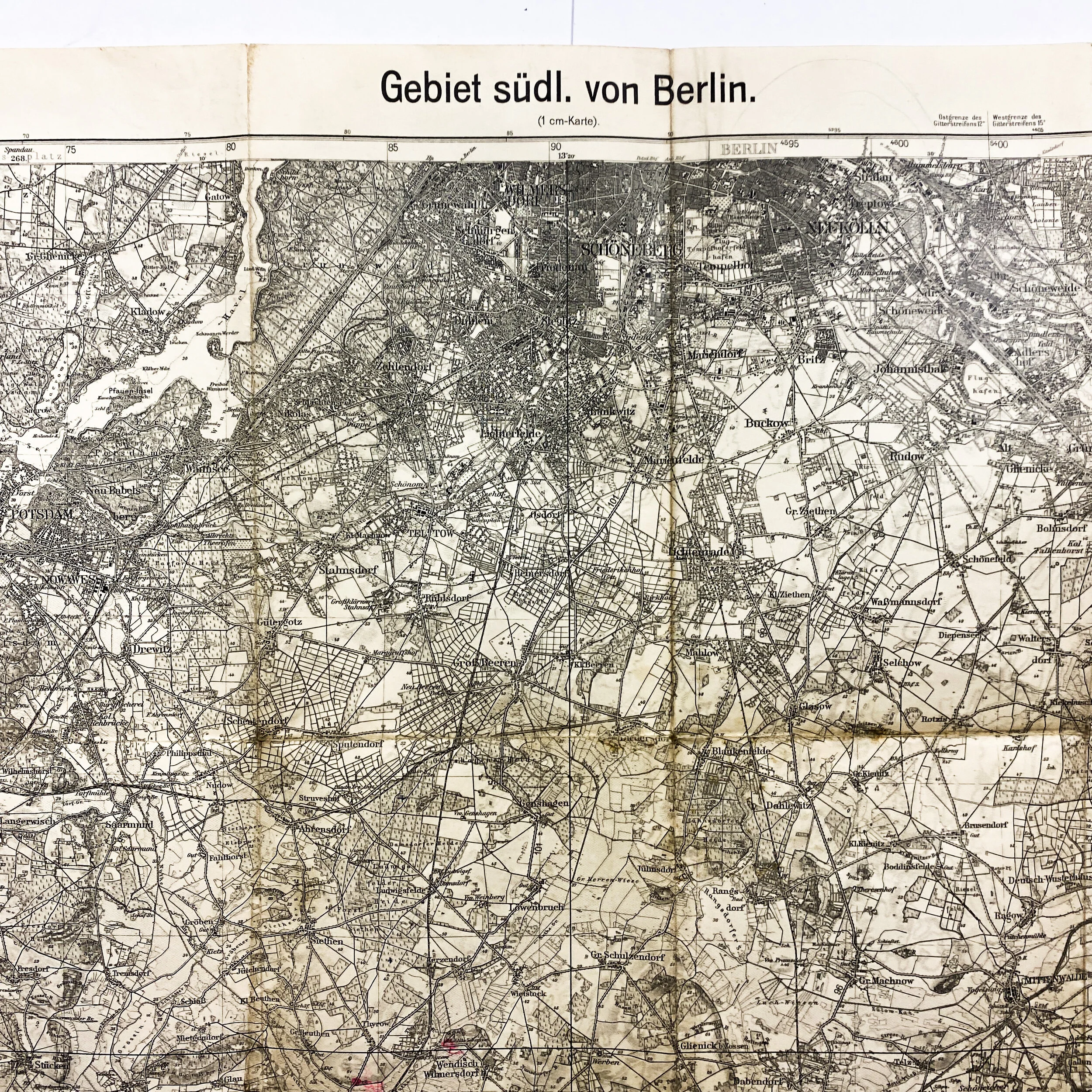




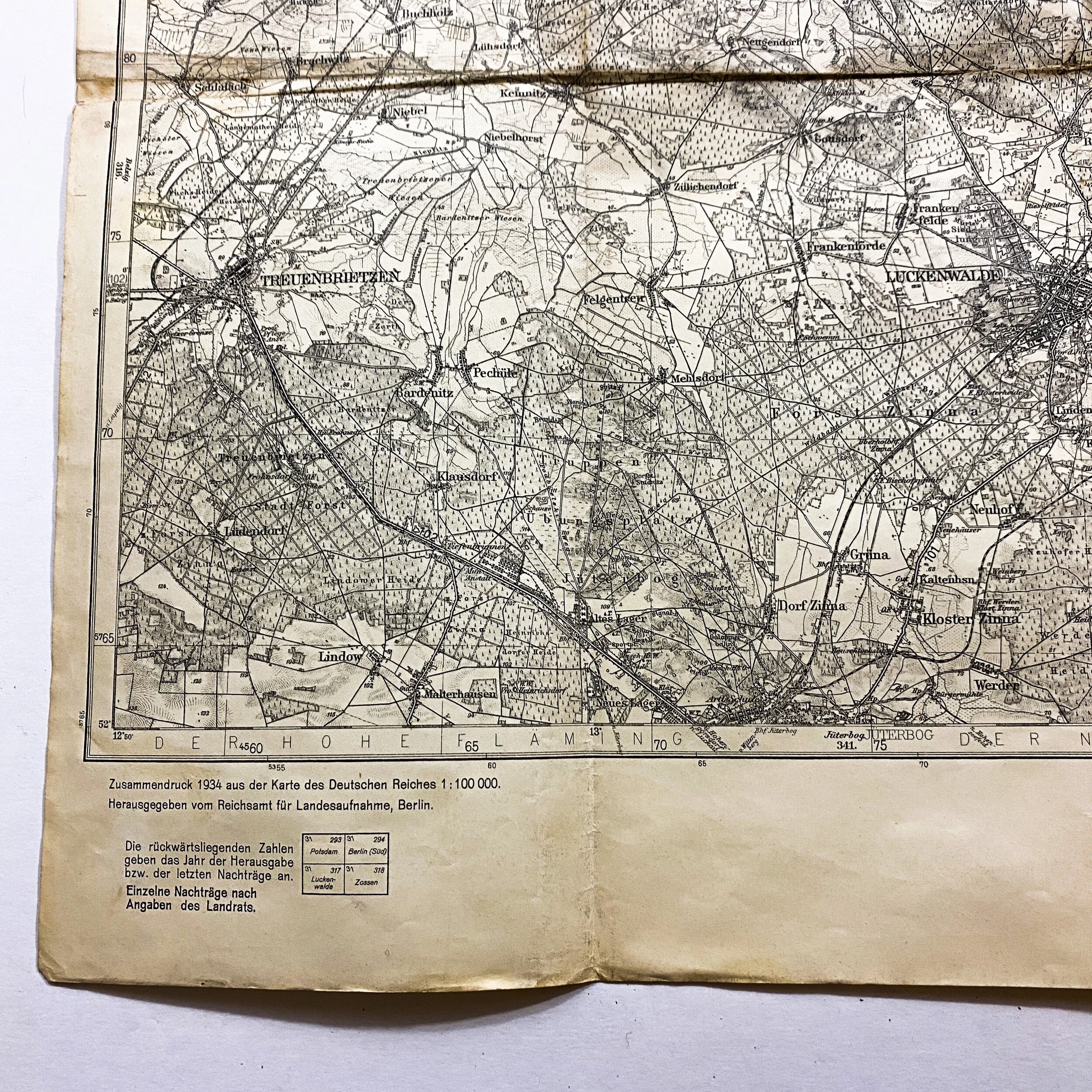

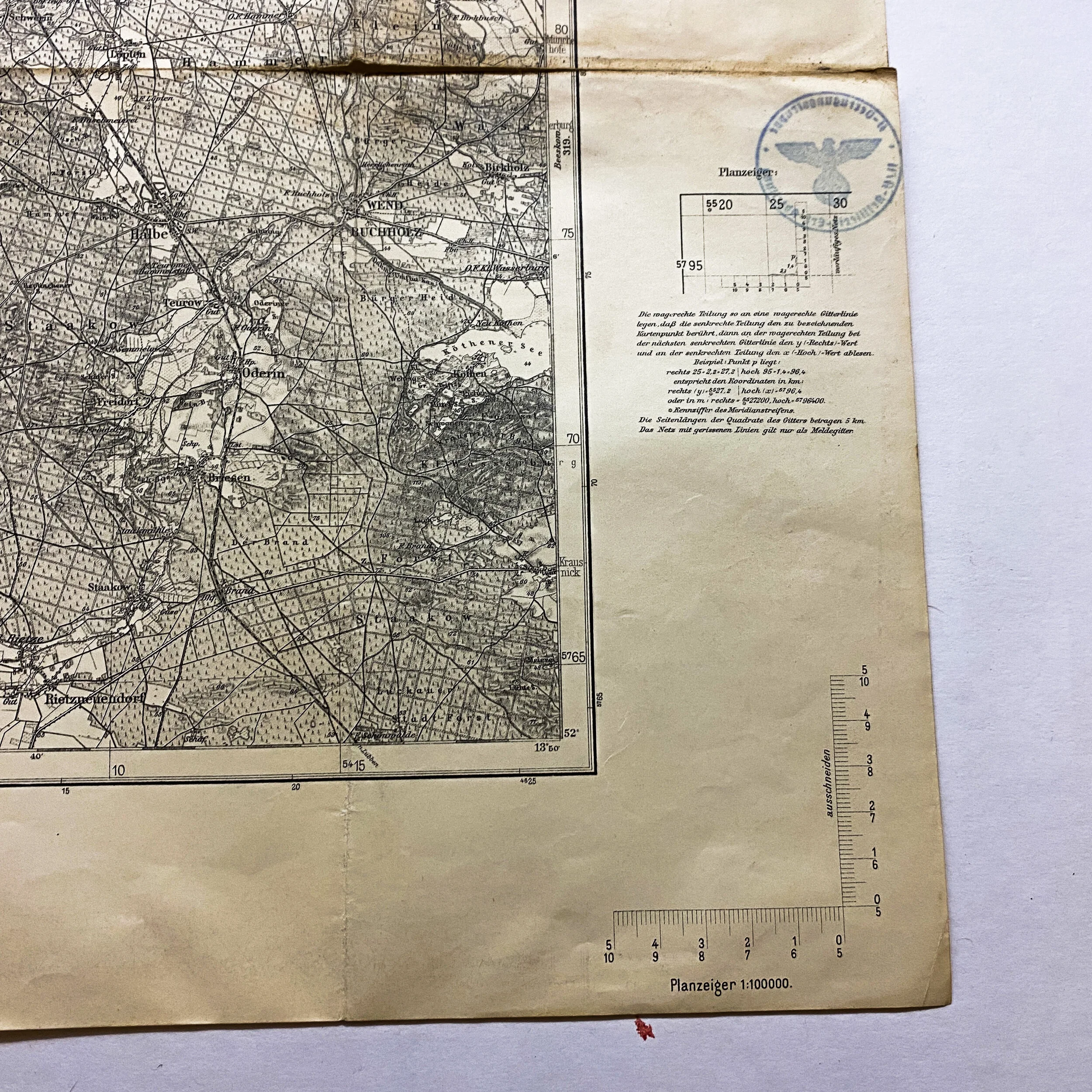



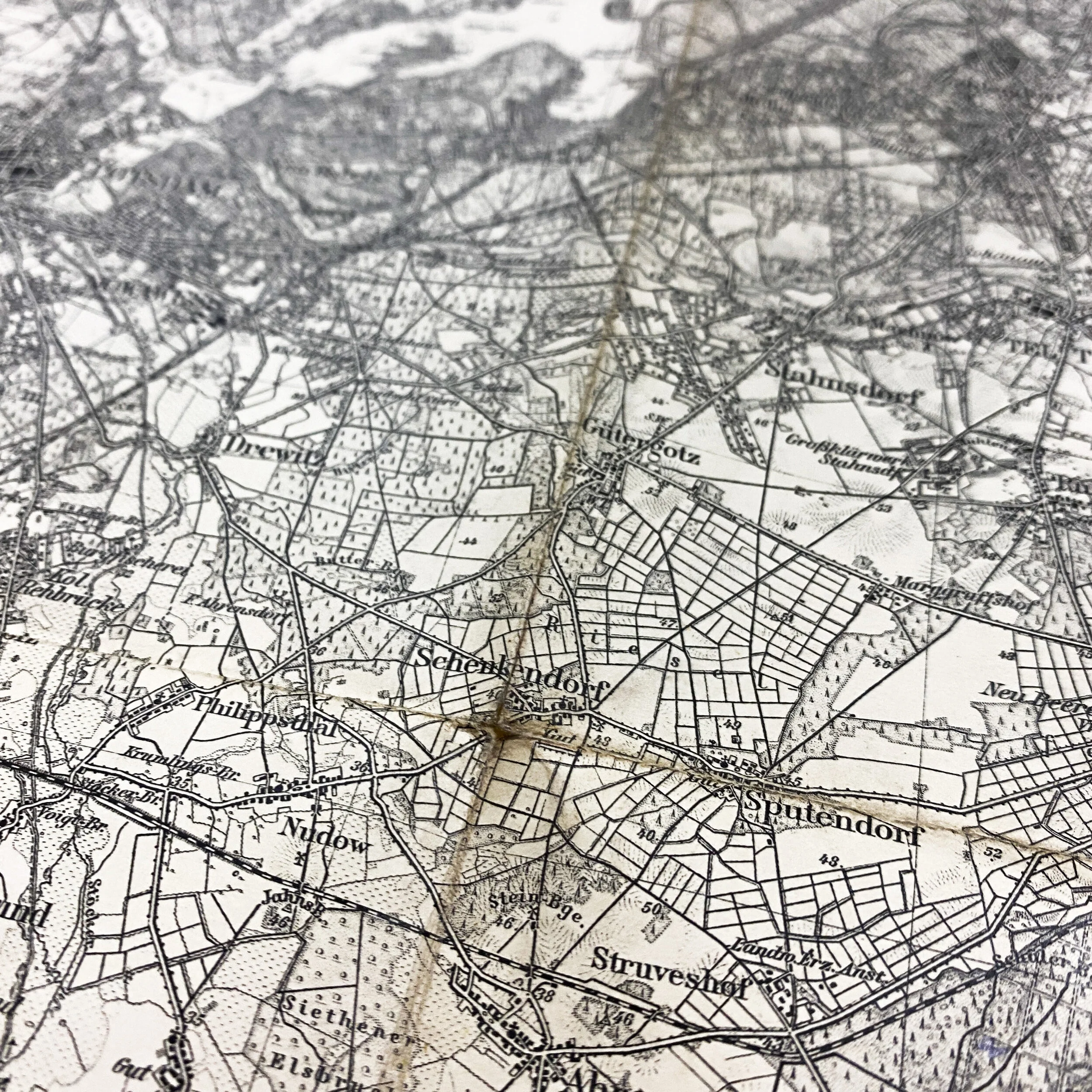
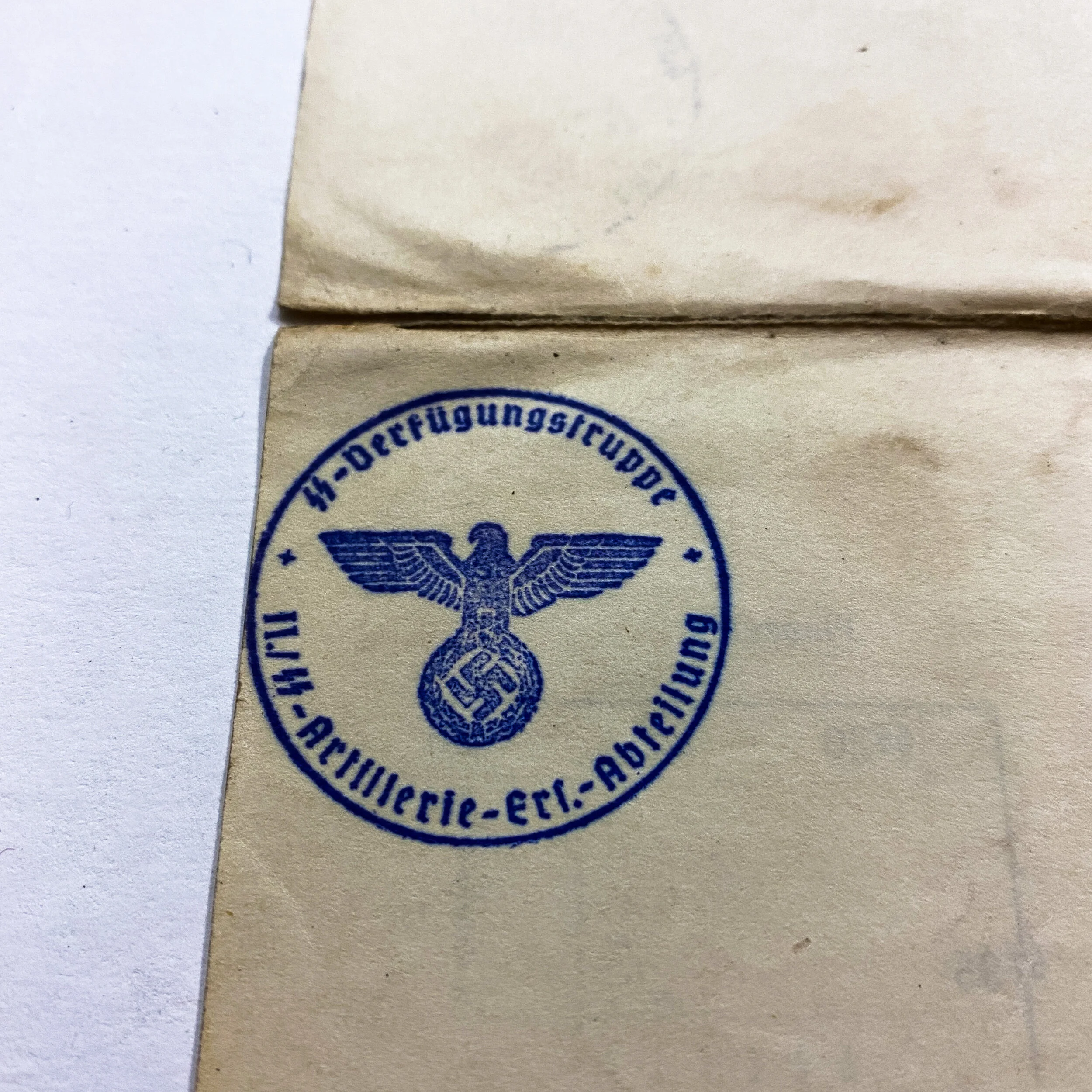

*EXCLUSIVE* German SS-Verfügungstruppe Stamped 1934 Dated "Gebiet Südl. von Berlin" Combat Map
Museum Grade WWII German SS-Verfügungstruppe Artifact.
Size: 31 x 25.5 inches
This is an extremely rare and one sided German SS-Verfügungstruppe map that is dated an early war date of 1934. The top of the German map is titled "Gebiet Südl. von Berlin" (Translated: Area south of Berlin) shows annotations and marked areas around the towns of Trebbin, Wilmersdorf. The map shows a large geographical located near one of the most infamous land battles of WWII that saw much action of German troop movement during the entire war. This map shows heavy wear and use but overall is in very good condition. What makes the map so rare is the intact and visible German SS-Verfügungstruppe stamp located on the back (blank) side of the map. The ink does protrude threw and does show on the inside (map) side and is visible from both sides. Located near the bottom right is a ‘planzeiger’ or plan pointer ruler. This would have been a measurement tool used by the SS German troops to determine land distance over the geographical region.
SS-Verfügungstruppe:
SS-Verfügungstruppe (SS-VT) (English: SS Dispositional Troops) was formed in 1934 as combat troops for the Nazi Party (NSDAP). On 17 August 1938 Adolf Hitler decreed that the SS-VT was neither a part of the police nor the German Wehrmacht, but military-trained men at the disposal of the Führer. At the time of war, the SS-VT were to be placed at the disposal of the army. The SS-VT were involved in the German invasion of Poland in September 1939. By 1940 these military SS units had become the nucleus of the Waffen-SS.
Early Operations:
Elements of the SS-VT served with the Wehrmacht during the occupation of the Sudetenland, Austria, and Czechoslovakia. For those operations, the SS-VT was under the command of the army. The SS-VT also formed an Artillery Regiment during this time-frame which was used to fill the gaps in a number of army units for those events. The SS-VT regiments Deutschland and Germania along with the Leibstandarte participated in the invasion of Poland, with Der Führer (recruited in Austria after the Anschluss) in reserve at Prague. In September 1939, a combined unit of SS-VT and Heer (army) troops conducted operations jointly as Panzer Division Kempf during the invasion of Poland. It fought alongside army units at Rozan, Modlin, Łomża and Kmiczyn. The division was disbanded near the Polish city of Nidzica on 7 October 1939.
In spite of the swift military victory over Poland in September 1939, events during the invasion of Poland raised doubts over the combat effectiveness of the SS-VT. The OKW or Oberkommando der Wehrmacht (High Command of the Armed Forces) reported that the SS-VT units took unnecessary risks and had a higher casualty rate than the army. They also stated that the SS-VT was poorly trained and its officers unsuitable for combat command. As an example, OKW noted that the Leibstandarte had to be rescued by an army regiment after becoming surrounded at Pabianice by the Poles. In its defense, the SS insisted that it had been hampered by having to fight piecemeal instead of as on formation, and was improperly equipped by the army to carry out its objectives. Himmler insisted that the SS-VT should be allowed to fight in its own formations under its own commanders, while the OKW tried to have the SS-VT disbanded altogether. Hitler was unwilling to upset either the army or Himmler, and chose a third path. He ordered that the SS-VT form its own divisions but that the divisions would be under army command.
In addition, Eicke's SS-TV field forces were not military, and during the invasion of Poland, "Their...capabilities were employed instead in terrorizing the civilian population through acts that included hunting down straggling Polish soldiers, confiscating agricultural produce and livestock, and torturing and murdering large numbers of Polish political leaders, aristocrats, businessmen, priests, intellectuals, and Jews." Further, members of the Leibstandarte also committed atrocities in numerous towns, including the murder of 50 Polish Jews in Błonie and the massacre of 200 civilians, including children, who were machine gunned in Złoczew. Shootings also took place in Bolesławiec, Torzeniec, Goworowo, Mława, and Włocławek.